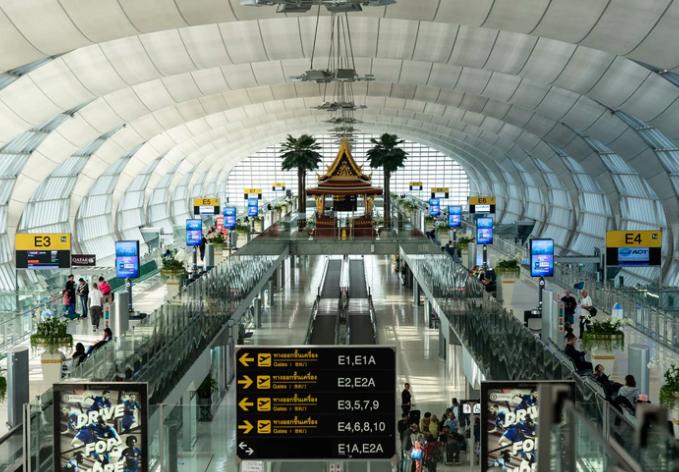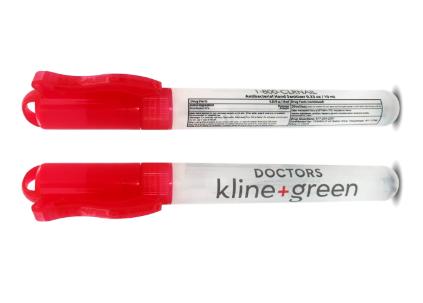How To Prevent Toenail Fungus
No one wants to experience toenail fungus (also called onychomycosis). However, it is relatively...

If you’re having to travel by plane then you may be wondering how you can avoid picking up germs and viruses from other passengers in the terminal and on flight, especially these days with extra delays and flights on hold or cancelled around the world. People are naturally worried about catching illnesses such as Coronavirus (COVID-19) but other illnesses and infectious diseases such as the virus you pick up in flu season is also something that you should want to avoid anyway, since the flu can also be a serious illness that kills tens of thousands of people globally each year. Here are some travel tips on how to reduce your chances of becoming ill on your next flight.
One common fear is that the air circulation system in an airplane can spread germs via the cabin air. Aircraft use high-efficiency particulate air (HEPA) filters in their recycled air system. HEPA filters on aircraft have to meet certain guidelines, filtering out more than 99.9% of particulates over a certain size. This means the likelihood of catching a virus via the air recycling system is very low.
Ultimately, the most likely reason you might catch a cold or the flu after you have traveled by plane is because you have been in close proximity to other people for a long period of time. When a sick passenger coughs and sneezes, germs and viruses are transmitted in their proximity. This is why most flights have been recently grounded for instance.
To deal with the proximity issue you could consider wearing a face mask, but they are not that effective. Wearing a face mask can help reduce your exposure likelihood a little. So, for those individuals who want to protect themselves as fully as they can, (whilst still utilizing air travel) a face mask is a viable option. Face masks are perhaps better at stopping germs from spreading if worn by people who are ill. If you have a cold and are sneezing, then if you wear a face mask then this can help reduce the germs from being transmitted in water droplets contained within your sneeze.
In fact, the reason why you may pick up illnesses from passengers coughing and sneezing is because minute particles land on surfaces that you touch. It is likely that you may pick up germs from your seat, such as the seat belt buckles, arm rests, seat back buttons and tray tables. Germs can remain on hard surfaces for a long time. Ultimately though, we can’t sit in our seat and not expect to touch anything. We need to fasten our seat belts, may be served food and drinks, and if we’re sitting in the window seat, we may wish to open and close the window blind. Whilst it is a nice idea to try not to touch the objects around us, it isn’t very practical.
When we touch an object with a germ on it, the germ is transferred to our hands. Once a virus or germ is on your hands, you transfer that into your body by typically touching your mouth or eyes. This is the main reason you might get sick.
To counter this, regular hand washing is the best way to reduce the likelihood of reducing the chance of picking up an illness. The CDC report that hand washing can reduce respiratory illnesses, by 16-21%
Turning on the overhead air vent can also help reduce the chances of catching illnesses, since the air coming out of the vent can create an air barrier between you and the virus, also helping push the air containing the virus away from you.
One option is to use disinfectant wipes to clean up your seat area when you first get on the plane. Wiping down all surfaces can at least help reduce any existing germs already in the area on surfaces.
You can wash your hands regularly in the plane restroom, but if you do visit the lavatory, remember you can pick up germs from faucets and flush buttons too, so it is imperative you wash your hands. Some individuals may wish to avoid the airplane bathroom altogether but on a long flight this may be hard to do.
Learn more about washing your hands during the current Coronavirus issue

In this situation an alternative solution is to use hand sanitizer. This is a great way to kill germs on your hands and sanitizing can be done regularly. You can get small travel hand sanitizers, such as the Doctors Kline + Green one, that can fit in your carry-on luggage. In addition to that, it is worth noting that some hand sanitizers that you buy in the shops are too large for carry on luggage, and will not be allowed through airport security, so it’s a great idea to pick up a travel size sanitizer. Pop it in your seat-back pocket to remind you to regularly clean your hands with it.